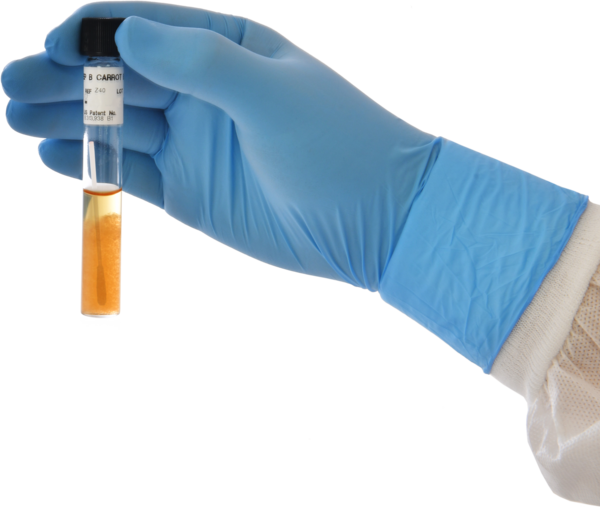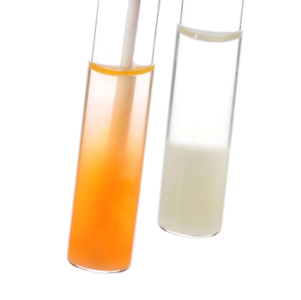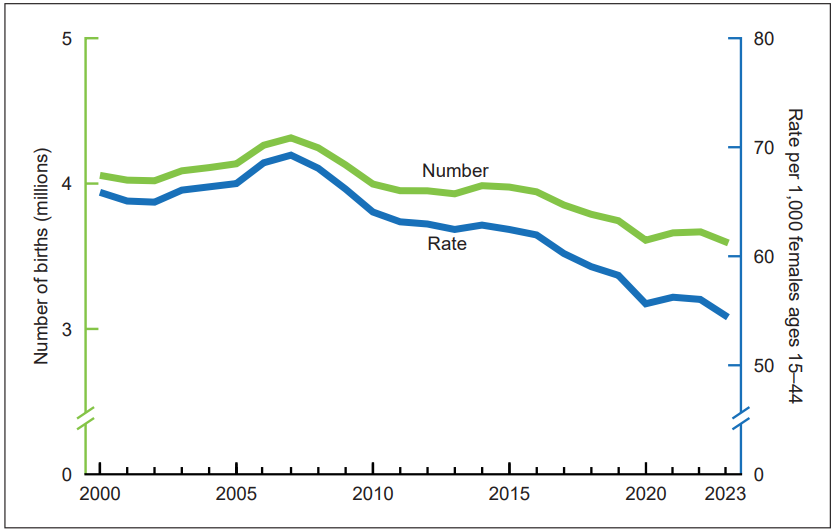Reducing Risk with Strep B Carrot Broth™: Combatting Newborn GBS Infections
The birthrate in the United States has hit a new record low, according to an analysis of 2023 birth certificate data published this past spring by the Centers for Disease Control and Prevention (CDC). Last year’s slowdown marks an end to the uptick in new babies that began during the COVID-19 pandemic. At least 3,591,328 babies were born in the U.S. in 2023, down 2% from the 3,667,758 born in 2022. Prior to the pandemic, U.S. birthrates continued to decline with an average of about 2% fewer babies each year.
This is on par with the global birthrate, which fell from 4.84 in 1950 to 2.23 in 2021. Predictions point to a continuing drop in birth rates to 1.59 in 2100.
“What we are experiencing now, and have been experiencing for decades, is something that we have not seen before in human history, which is a large-scale, cross-national, cross-cultural shift towards preferring and having smaller families,” said Dr. Jennifer D. Sciubba, a demographer and author of 8 Billion and Counting: How Sex, Death, and Migration Shape Our World.
The birth rate is one of the most important determinants of a country’s population growth, potentially impacting policy decisions about the health system, education, and economy.1
A previous analysis by the Institute for Health Metrics and Evaluation published in the Lancet in 2020 predicted that the world population will peak in 2064 at around 9.7 billion and then decline to 8.8 billion by 2100. Another projection by the UN World Population Prospects 2022 predicted world population to peak at 10.4 billion in the 2080s.
“Regardless of the exact timing of peak world population, it will likely begin declining in the second half of the century," Sciubba said, "with dramatic geopolitical, economic and societal consequences.”
While we wait to see if these predictions are correct or not, count back nine months, and it's worth noting that most conceptions occur in the fall and winter. That matches up with the CDC’s data suggesting that August and September are among the most popular birth months.
In an ongoing effort to protect all newborns and their mothers, Hardy Diagnostics continues to create innovative products to aid in newborn health care. One of Hardy’s most unique and colorful products to detect Group B Streptococcus in pregnant women is Strep B Carrot Broth™ One-Step (Cat. no. Z40). In the United States, Group B Streptococcus or GBS is a leading cause of meningitis, pneumonia, and bloodstream infections in a newborn’s first three months of life. Two to three in every 50 cases of newborn GBS infections are fatal. The American College of Obstetricians and Gynecologists, the CDC, and the American Academy of Pediatrics recommend that pregnant women should be screened for GBS colonization between 36 and 38 weeks of gestation.
This is why Hardy Diagnostics created Strep B Carrot Broth™ One-Step (Cat. no. Z40). Hardy Diagnostics' exclusive one-step system allows for faster and more accurate results in the cultivation and identification of beta-hemolytic strains of GBS in pregnant women compared to LIM Broth.

Strep B Carrot Broth™ One-Step method

Strep B Carrot Broth™ One-Step (Cat. no. Z40) features greater sensitivity and decreased turn-around-time compared to LIM Broth enrichment, which lowers overall costs. An easy-to-see color change reaction in as early as eight hours after testing indicates a positive result and with positives, there is no need to further subculture to confirm. Negative cultures from Strep B Carrot Broth™ One-Step should be subcultured to Blood agar or GBS Detect™ (Cat. no. A300) to detect weakly or non-hemolytic strains of GBS.
Hardy Diagnostics offers a variety of pack sizes for both Strep B Carrot Broth™ One-Step and GBS Detect™:

Strep B Carrot Broth™ OneStep
- 4ml, Pack of 20 - Cat. no. Z40
- 4ml, Pack of 100 - Cat. no. Z44BX
- 6ml, Pack of 100 - Cat. no. Z46BX

GBS Detect™
- Pack of 10 - Cat. no. A300
- Case of 100 - Cat. no. A300BX
- Pack of 10* - Cat. no. GA300
*For automated inoculation instruments
References:
1. Grundy E, Murphy M. Demography and public health. In: Detels R, Gulliford M, Karim QA, Tan CC, editors. Oxford textbook of global public health. 6th ed. Oxford, England: Oxford University Press, 718–35. 2015.
Meet the author

CLINICAL PRODUCT MANAGER at HARDY DIAGNOSTICS
Megan Roesner, B.A. Journalism and Mass Communications
Megan is a seasoned writer and marketing professional who comes from a background in television journalism, followed by fifteen years leading mulitple hospital marketing and communications teams with the largest not-for-proft health system in the U.S. Megan has won numerous tv, writing and marketing awards and is a member of a number of professional public relations and marketing associations. Her passion for continuous professional challenges and life-long learning led her to Hardy Diagnostics. Megan is proud to work amongst a wonderful marketing team surrounded by experienced microbiologists and scientists who constantly push for the latest and greatest products to help diagnose and detect disease. In her current role, Megan is in charge of product development and marketing Hardy's clinical category which encompasses hospitals and health systems, clinics and research institutions, higher education and veterinary diagnostics. In her free time, Megan enjoys being a mom to her two very active boys, cats, a dog, a very old goldfish and 24 chickens.








